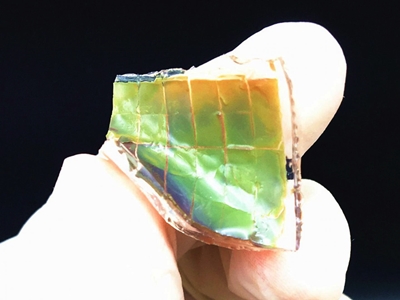|
NOVIDADES
Some creatures, such as chameleons and neon tetra fish, can alter their colors to camouflage themselves, attract a mate or intimidate predators. Scientists have tried to replicate these abilities to make artificial "smart skins," but so far the materials haven't been robust. Now, researchers reporting in ACS Nano have taken a page from the chameleon's playbook to develop a flexible smart skin that changes its color in response to heat and sunlight. The hues of chameleon skin rely not on dyes or pigments as most colors do, but instead on arrays of tiny structures known as photonic crystals. Light reflects from these microscopic surfaces and interferes with other beams of reflected light, producing a color. The hue changes when the distance between photonic crystals varies—for example, when a chameleon tenses or relaxes its skin. To mimic these natural abilities, scientists have embedded photonic crystals in flexible materials, such as hydrogels, and changed their colors by contracting or expanding the material like an accordion. However, these large fluctuations in size can strain the materials and cause them to buckle. Khalid Salaita and colleagues wanted to take a closer look at chameleon skin and use what they learned to design a strain-accommodating smart skin.  Inspired by chameleon skin, this flexible material changes color in response to heat and light. Credit: Adapted from ACS NANO 2019
By American Chemical Society. Posted: Sept 11, 2019. |
|||||||||||||||||||||||||